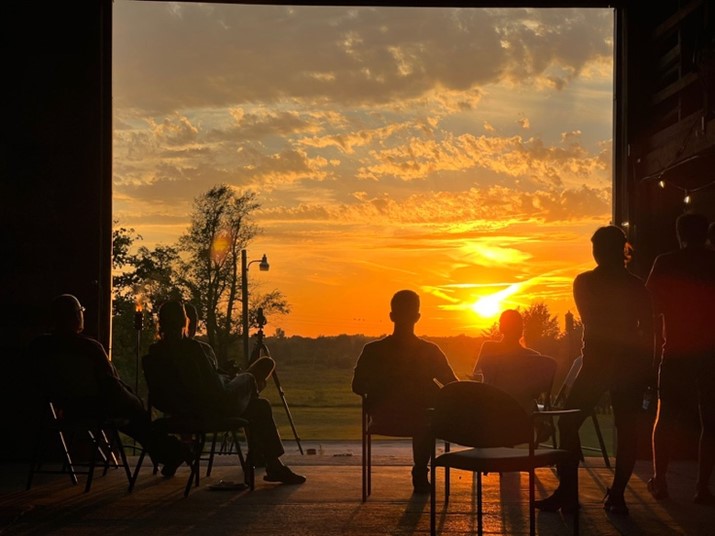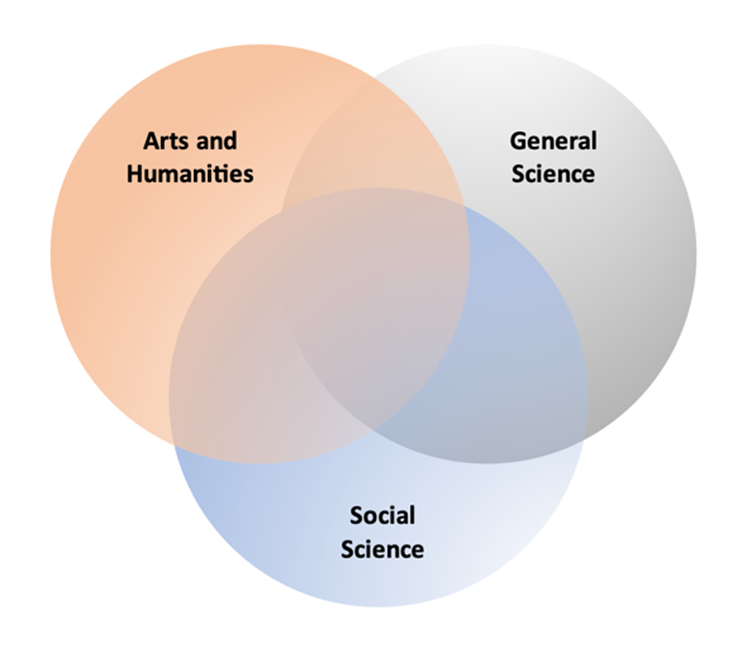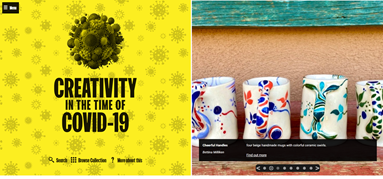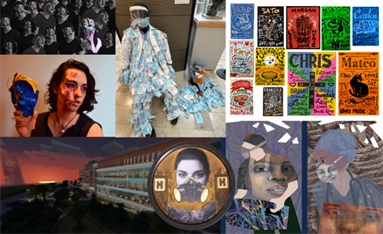CIRCLE (Center for Interdisciplinary Research, Collaboration, Learning, and Engagement) is excited to offer seed grants to support three projects in 2024-25. This program aims to provide an opportunity for genuine interdisciplinary collaboration among scholars and educators from different fields and areas of focus.
Funded projects will receive up to $15,000 in funding as well as facilitation and professional development support provided by CIRCLE leadership. This CIRCLE support will help teams build effective collaborative relationships and problem solve interdisciplinary hurdles. Activities might include training workshops, facilitated team building, and/or evaluation design guidance.
CIRCLE Seed Grant Recipients 2024-25
We received quite a few competitive proposals this year, and we are happy to announce our 2024-25 Seed Grant recipients. These projects show great promise and potential for interdisciplinary research, teaching, and engagement, and we look forward to working closely with project teams over the next year.
Place-Based Performance: Understanding Conservation & Multi-Use Landscapes through Theater

Ben Eiler, Department of Fisheries and Wildlife
Emily Pomeranz, Ph.D., Department of Fisheries and Wildlife
Garth Sabo, Ph.D., Center for Integrative Studies in the Arts and Humanities
Rob Roznowski, Department of Theatre
MSU’s Corey Marsh Ecological Research Center (CMERC) sits on a 400-acre parcel of land included in the original land grant that formed the university. The marsh is described as “a site for long-term, interdisciplinary research of inland wetland ecosystems, creating opportunities for student experiential learning and community engagement.” This project will activate that orientation toward interdisciplinarity and community engagement by developing site-specific creative material with the goal of measuring the impact of theatrical performance on ecological knowledge and attitudes among the participants and audience of custom stage performances. This effort reflects a collaboration among a team of faculty supervisors and undergraduate creative team who will together write, rehearse, and perform a custom, site-specific play focusing on themes of land use and conservation at Corey Marsh.
In addition to this creative output, this project also includes systematic inquiry to collect and analyze data measuring the efficacy of stage performance as a tool for science education. Our research objectives include: 1) to create a framework that establishes effective collaborations between artists and scientists ; 2) to explore the ways a scientifically grounded work of theater can influence audiences’ science learning and adoption of ecological attitudes; and 3) to evaluate the impacts working in collaborative settings have on the attitudes of artists and scientists regarding art and its role in conservation, the power dynamics between artists and scientists, and participants' interest in continued pursuit of art-science collaborations. Our work is grounded in an arts-based research (ABR) approach augmented with participant observation and semi-structured interviews, including pre- and post-interviews with the artists, scientists, and audience members involved in this production.
Our goal is for this project to be intrinsically interdisciplinary, such that neither the arts nor the sciences are subordinated to the other but rather that each will complement the methods and perspectives made possible by the other. We blend methods from the arts with the environmental sciences to portray the marsh as a site of profound engagement with the natural world, recognizing that both STEM and humanistic disciplines provide invaluable tools for responding to encounters with such places. We seek to evaluate the impacts scientific context can have on creative output and the ways that theatrical modes of expression can influence absorption of content and adoption of ecological orientations. Thus, a long-term goal of this arts/science partnership will be the creation of a toolkit that will, we hope, be broadly deployable for science educators, conservationists, and performance specialists looking to promote greater ecological awareness and community engagement.
A distinguishing feature of this project is its top-to-bottom engagement with student creators. Our creative and research teams will both be primarily staffed by undergraduates, though the project will be administered by our faculty partners. This is by design and meant to celebrate the positive impact that agency and engagement can have within student populations. In addition, we will work closely with the CMERC leadership team to engage the local communities of Bath, as well as members of our local indigenous communities through CMERC’s partnership with the Nokomis Cultural Heritage Center, to ensure that the project activities are properly reflected of the various people who come to, rely on, and cherish the marsh. In this, our hope is that our thematic interest in land use can be mirrored with a critical engagement with the rhetoric of land grant, relying on CMERC’s long history as a piece of the broader MSU campus to reflect on how the institutional past collides with the present and future.
Interdisciplinary Course Creation Pathway

Brandy Ellison, Director of the Center for Integrative Studies in Social Science
Stephen Thomas, Assistant Dean for STEM Education Teaching and Learning and the Associate Director of the Center for Integrative Studies in General Science
Michael Lockett, Associate Director of the Center for Integrative Studies in Arts and Humanities
Gabe Ording, Director of the Center for Integrative Studies in General Science.
David Baylis, Assistant Professor in the Center for Integrative Studies in Social Science
MSU has three centers for integrative studies: arts and humanities (CISAH), general science (CISGS), and social science (CIS). These centers are responsible for most of the general education curriculum at MSU; undergraduates complete up to 24 credits (or 20% of their degree requirements) through their courses. These offerings focus on interdisciplinary learning and introduce students to core concepts and fundamental research methods across the various disciplines represented in their respective colleges.
The centers have a history of collaboration, especially in the areas of assessment and professional development. Collaboration on curriculum development, however, is less common. With support from the CIRCLE Seed Grant, we hope to increase interdisciplinary collaboration by identifying and charting new paths around systemic barriers; in turn, we hope to develop high-quality, co-taught, interdisciplinary courses.
Our primary goal is to develop a sustainable path for cross-center course development for faculty teams. Our secondary goal is to pilot a co-taught interdisciplinary course that draws on faculty expertise from each of the centers and can be offered in Fall 2025 or Spring 2026. Our tertiary goal is to pair this administrative and curricular development work with a research study, as a means of investigating and assessing the efficacy of the work.
The Art of Healing in Hospital Spaces: Interdisciplinary Research and Creative Outreach in Health Humanities and Disability Studies

Natalie Phillips, Department of English
Emiko Blalock, Department of Family Medicine
Morgan Shipley,Department of Religious Studies
Chelsea Wentworth, Office of Medical Education Research and Development

This project brings humanities into hospitals by creating a 4–6 week exhibition of pandemic art and stories that illuminate how intersectional BIPOC, LGBTQIA+, and disability communities turned to creativity during Covid-19. We draw on our global collection of over 2,000 works of pandemic art (gathered 2021–2024), to curate a new exhibition encouraging audiences to reflect on how Covid-19 shaped our experiences with medicine, illness, and disability.
Memorializing the pandemic as it continues to affect countless lives, we recognize both the legacy and the ongoing nature of this public health crisis. Our exhibition commemorating the Covid-19 experience creates a space for the “multi-directional memory” of the pandemic, encouraging visitors to leave with: 1) a better sense of how they can remember the effects of Covid-19 in their own lives and the lives of their loved ones, 2) diverse methods for collective remembrance, and 3) a deeper understanding of the historical inequities illuminated by the pandemic. What makes this exhibit distinctive is that it brings together creative pieces that blend disability studies and medical humanities—two subfields that rarely intertwine—carving out a novel space for interdisciplinary research, teaching, and outreach.
